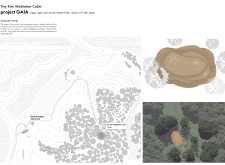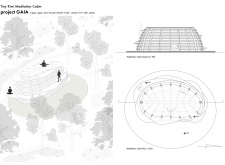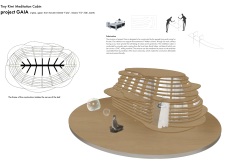5 key facts about this project
The Tiny Kiwi Meditation Cabin, known as Project GAIA, is located in the varied landscapes of New Zealand, where mountains, volcanoes, and rivers coexist. Designed as a quiet space for meditation, the cabin emphasizes a close relationship between its occupants and the surrounding nature. The concept draws from Gaia, a term meaning Earth, guiding the creation of a structure that blends in with its beautiful setting.
Design Concept
The form of Project GAIA features a flowing outline that resembles the shapes found in the local geology. This design encourages interaction with the environment. Inside, the cabin mimics a cave, providing an atmosphere of comfort and safety. This setting invites personal reflection and quiet thought, allowing visitors to engage with their inner selves.
Materiality and Construction
Native red beech timber is the primary material used in the cabin's construction. The design allows for modular assembly, making it easier to build on-site. CNC milling technology is utilized, allowing for precise cuts and fitting of wood pieces. This method minimizes waste and encourages local community involvement, deepening their connection to the space.
Elemental Inspiration
The design incorporates the four classical elements: Fire, Air, Earth, and Water. Fire is represented by a small altar at the center, serving as a place for thought and focus. The leaf-shaped roof symbolizes the Earth’s protective qualities, while the cabin’s layered design reflects the flow of Water. Openings between these layers allow plenty of natural light to fill the space, creating a bright and welcoming interior.
Topographic Design
The pathway leading to the cabin is designed to resemble an umbilical cord, emphasizing themes of birth and renewal. This connection adds meaning to the cabin as a nurturing space, guiding visitors on a thoughtful journey. The design fosters exploration and encourages an awareness of the surroundings.
Light filters through the cabin’s layers, creating soft shadows and patterns on the interior surfaces. This gentle illumination enhances the meditative quality of the space, providing a calming presence for all who enter.






















































